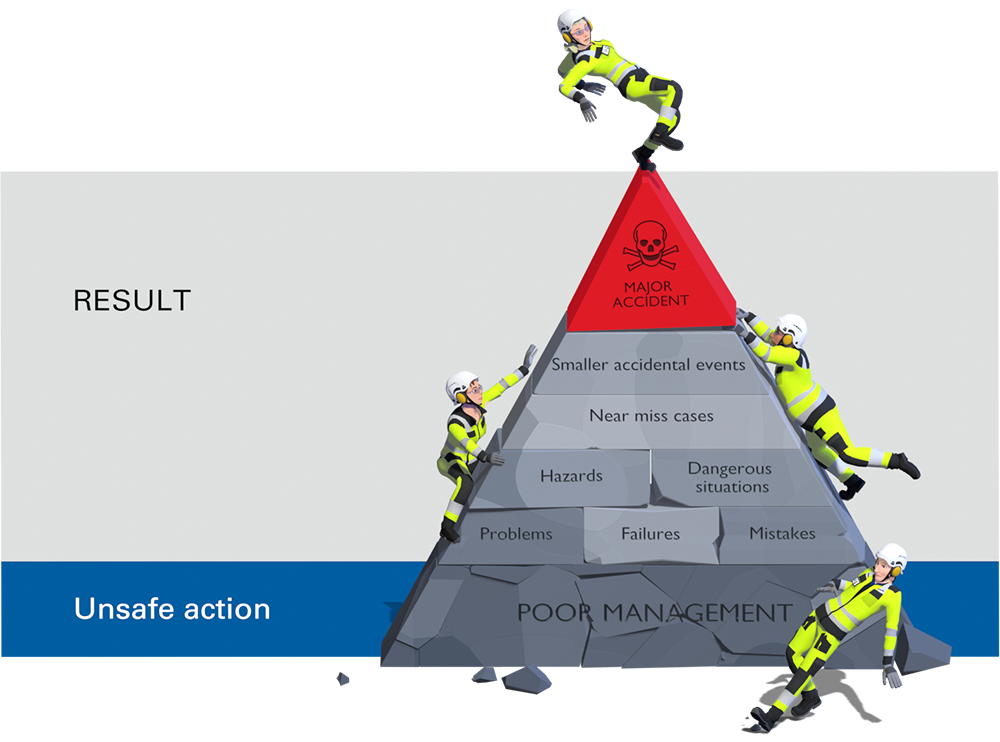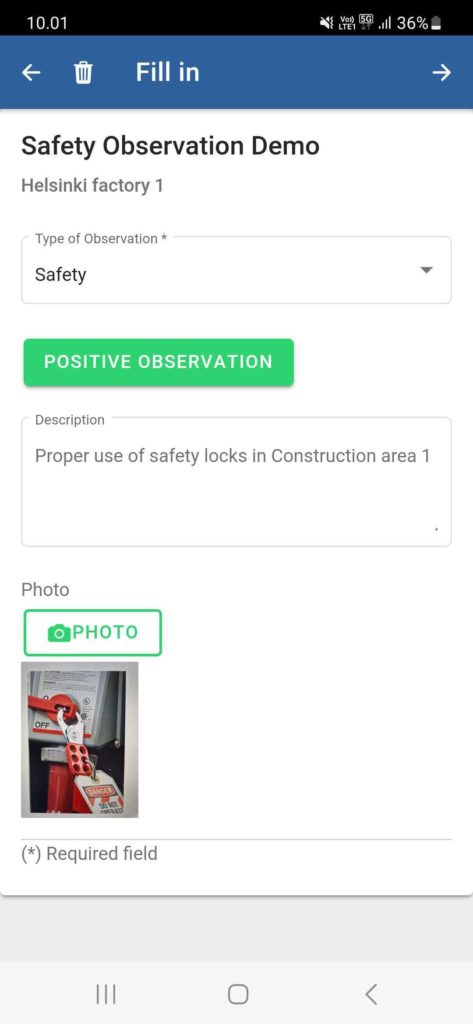We all have a duty to report the shortcomings and hazards we observe. Information about even a minor fault or a potential development opportunity reduces the likelihood of a more serious event occurring.
The starting point is that all observations that may cause harm to the health or safety of operations are safety observations. Hazards and risk factors can be found in all HSEQ perspectives regarding occupational safety, information and facility security, quality, environment and business continuity management. ‘All observations that may cause harm to the health or safety of operations are safety observations’.
Different types of safety observations
Occupational safety observations include hazards related to walkways and mobility, shortcomings and faults in work permits, machines or equipment, use of protective equipment and unsafe operation. In the office, messy workspaces and structures that hinder safe mobility can pose a risk for safe evacuation in case of a fire and expose people to injuries.
Similarly, environmental safety and quality observations may be related to the different stages of product or operation quality, the transfer, use and storage of chemicals, the condition of protective equipment and the methods related to them, up-to-date chemical risk assessments or the existence of guidelines.
From the perspective of facility security, inoperative doors and door closers at the office or improper use of alarm devices are risk factors and thus safety observations.
Regarding information security, security observations include the observation of factors threatening undisturbed operations and the safe processing of data, such as sophisticated phishing/scamming attempts and the storage of confidential material in facilities that visitors or outsiders have access to (conference rooms, lobbies).
As for crime safety, theft concerning workstations and other tools, for example, are also observations related to safety.
Observations can break a chain of unwanted events
In the background of each accident/serious incident, there is always a series of smaller accidental events, near misses, poorly managed matters, problems, errors and bad practices. By paying attention to the roots of accidents, we can reduce the likelihood of a more serious incident. Accidents and other unwanted events can always be prevented when shortcomings and problems are eliminated by making observations. Observations at the workplace are made so that we can learn from them and manage safety. See accident pyramid:

In fact, making observations at the workplace is one of the most well-known indicators in safety management. Personal or team-specific objectives are often set for making observations, the purpose of which is to encourage everyone to make observations about their own working environment. The systems used to make observations are also developing. A lot of observations are made electronically using a mobile phone or computer, which is more convenient and faster than using paper forms. For example, mobile devices make it possible to attach images and videos and easily report using speech-to-text features. However, what is essential is that observations are made, processed and communicated and that we learn from them. The processing of observations must be transparent, and corrective measures taken based on this must be justified. Reporting observations is everyone’s responsibility so that every employee can go home healthy and safe.
Observations can also be positive
Safety observations are often perceived as negative, but they can also be positive. Positive safety observations can be used to share information on factors that promote safety, in which case good practices and lessons learned can be shared with others. For example, employees that have made observations can be rewarded or recognised in different ways, such as by organising a competition related to making positive observations. Positive observation reports improve the working environment, strengthen team spirit and increase psychological occupational safety. They can be done in any workplace and in all sectors. Here is one example of a positive observation, made in Impact Mobile Reporting:


